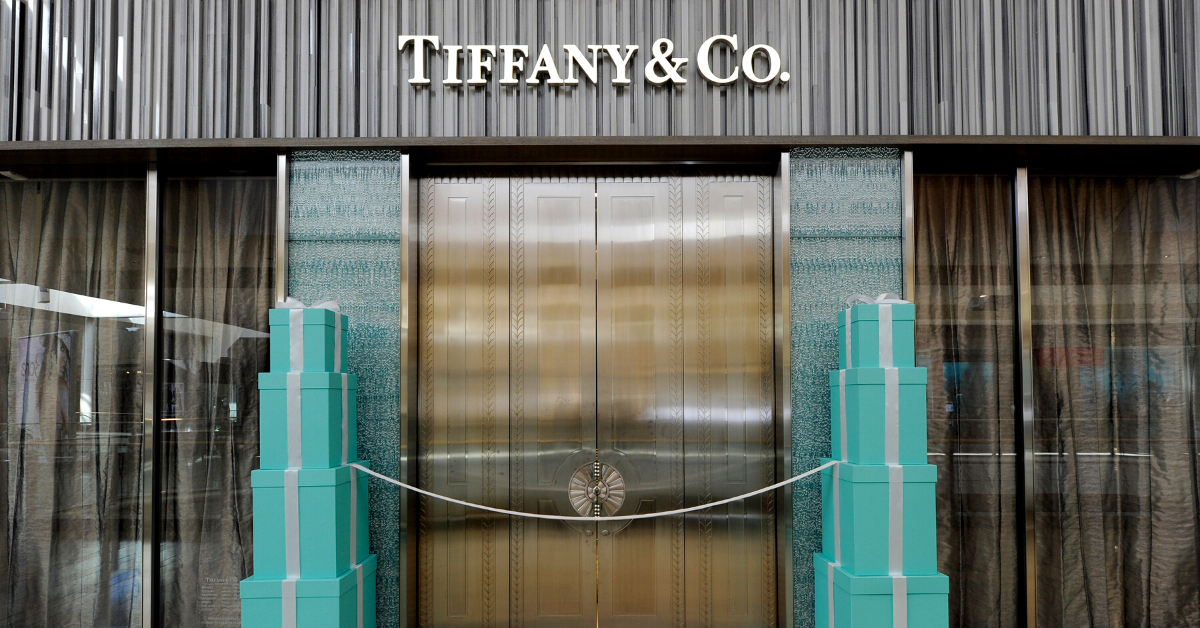In this issue
- Filecoin: Double
- CryptoPunks: Shiny things
- China's digital drift: sunny climate
From the editing desk
Dear readers
Digital asset investors weary of the crypto winter may be forgiven for the temptation to call it a reversal of fortunes as the value of cryptocurrencies rose earlier this week. Sadly, all the wishful thinking in the world doesn't move markets, no matter what people say about the irrationality of certain asset prices.
But there is a sense that the end of the deep freeze may be in sight. As investors lick their wounds as the drama surrounding the recent bankruptcies of overleveraged crypto companies unfolds, it's not unreasonable to wonder if the market has bottomed out. Indeed, this is a notoriously difficult decision, perhaps given the persistence of geopolitical and other risks that convulsed crypto and traditional stock markets alike this year in the first place. It will be necessary to prepare for increased volatility in the future.
But as US luxury jewelry retailer Tiffany & Co. demonstrated earlier this week when it announced plans for a collection of 250 gem-encrusted pendants modeled after CryptoPunks' non-fungible tokens, digital assets Some people in the field were unfazed by this. . Despite months of low market activity, at least some of the people who mustered up the courage to HODL one of the popular NFTs paid 30 ETH (approx. We're betting it'll be a game worth spending $48,500 on.
China's Web 3.0 companies are also not afraid of further market disruption as they leave countries where COVID-19 lockdowns have eased and migrate to greener pastures in Singapore.
Now let's return to the topic of reversal. The Southeast Asian city-state has been heavily criticized by some in the crypto industry this year after its central bank withdrew hopes that it could become a hub for retail activity in the industry.
While the Monetary Authority of Singapore shows no signs of making a second course correction, the fact that Chinese digital asset and Web3 companies are betting on the future of the Lion City in the industry means that even in the depths of winter, the sun is always somewhere. It shows that it is shining. .
Until next time,
Angie Lau
Founder and Editor-in-Chief
Forkast
1. Coined word

By the numbers: Filecoin — Google search volume increased by over 5,000%.
Filecoin has recently been the biggest gainer among the top 100 cryptocurrencies by market capitalization, rising 100% week-on-week and hitting US$11.24 on Monday, its highest price since the infamous Terra Luna crash in May. However, the decentralized storage network's token fell to around USD 8.37 by mid-week Asian time.
- Filecoin's impressive price rise comes as Australia-based venture capital firm Holon Global announced last Friday that it partnered with crypto exchange Gemini to offer investors exposure to Bitcoin, Ethereum and Filecoin. This happened after I launched a cryptocurrency fund.
- Filecoin led a group of cryptocurrencies including Ethereum Classic and Bitcoin Gold with double-digit gains for the week.
- Filecoin's resurgence is part of a broader recovery in the crypto market, which has been in turmoil since Terra's algorithmic stablecoin UST lost its peg to the U.S. dollar in May. This has even led to the suspension of withdrawals and the filing of bankruptcy.
- The altcoin rally follows Bitcoin's rise to more than $24,000, its highest since June, with Celsius Network becoming the first of many major crypto companies to freeze user withdrawals and It reversed the losses that had accumulated since the bankruptcy issue of currency hedge fund Three Arrows Capital. Shine. Bitcoin was trading at around US$23,000 as of mid-week Asian time.
- Ethereum was also trading at its highest since the recent crypto market crash, signaling a change in investor mood after a nearly three-month bear cycle, after trading at around $1,639. It fell to
Forkast.Insights | What does it mean?
Cryptocurrency prices have been volatile lately. Before the current bear market, Bitcoin and other cryptocurrencies moved in lockstep with broader asset markets, but that correlation may be weakening.
Investors are targeting this divergence in search of big profits. According to a recent report from CoinShares, July saw the year's biggest investments poured into cryptocurrencies. Approximately US$474 million inflowed into the market, almost reversing the outflow of US$481 million in June. Despite current declarations that the crypto winter is over, such definitive conclusions are unfounded.
While the last crypto winter was brought on by speculative bubbles surrounding ICOs and the Bitcoin collapse, the current period of low prices is more closely tied to the global economy. Rampage inflation and soaring energy prices have made it difficult to invest in exotic assets like Bitcoin at a time when bonds and other more stable assets are showing healthier returns.
Additionally, the burden of leveraged debt that pushed crypto prices to record highs in late 2021 is a concern for the entire industry. Some of the forced sales that wiped $2 trillion off prices earlier this year were the result of unsecured or undersecured loans that didn't undergo proper due diligence.
The impact of the interconnected web of financial institutions, decentralized finance (DeFi), and centralized finance (CeFi) continues, and the list of struggling companies continues to grow. Further turmoil is likely to continue.
2. punk rock

By the numbers: CryptoPunks — Google search volume increased by over 5,000%.
US luxury jewelry retailer Tiffany & Co. is expanding into the digital asset space by offering CryptoPunks NFT holders the sale of 250 non-fungible tokens. Set to release on August 5th, the “NFTiff” collection is a digital pass that can be redeemed for a CryptoPunk-inspired gem-encrusted pendant that dangles from an 18-karat gold chain.
- Tiffany designers “interpret each CryptoPunk into a custom-designed pendant, translating the 87 attributes and 159 colors that appear across our collection of 10,000 CryptoPunk NFTs into the most similar gemstone or enamel color.” says the jewelry company.
- Each NFTiff pendant costs 30 Ethers, or approximately $49,230 USD at the current price of ETH.
- Founded in 1837 and headquartered in New York City, Tiffany & Co. is best known for its diamond and silver jewelry. The company was acquired by Paris-based multinational LVMH Moët Hennessy Louis Vuitton in January 2021 for USD 15.8 billion.
- Alexandre Arnault, Tiffany's executive vice president and son of LVMH Chairman Bernard Arnault, is already an NFT enthusiast. According to Vogue Business, in February, the young Arnault switched his Twitter and Instagram profile pictures to a CryptoPunk song titled “Punk 3167” that he purchased for 160 ETH. In April he revealed A golden pendant made by Tiffany in honor of NFT.
- CryptoPunks was one of the first NFT collections to launch in mid-2017 as 10,000 pixelated avatars. According to CoinGecko, the collection has a market value of more than US$1.2 billion, with the lowest NFT price exceeding US$122,000 as of mid-week Asian time.
- Tiffany's entry into the NFT scene is part of the luxury sector's awakening to the potential of Web 3.0. Brands like Louis Vuitton, Gucci, Prada, and Burberry are also venturing into NFTs and the Metaverse.
Forkast.Insights | What does it mean?
Tiffany excerpted some of the “Bored Ape” strategy. Although NFT sales have fallen to a fraction of what they were last year, flagship collections like Bored Apes and CryptoPunks have endured, capturing the elite class of crypto investors retailers want to reach. is producing. And Yuga Labs, owner of both Bored Apes and CryptoPunks, is active in providing access to HODLers.
Cryptocurrency trading volume has declined along with individual discretionary spending, but the wealthy continue to spend. This means luxury brands could be eyeing the deep pockets of HODLers as the broader crypto market suffers a second crypto winter. So far, this strategy seems to be working.
Within 24 hours of Tiffany's announcement, NFT sales surged 248%, according to CryptoSlam data. Bored Apes experienced similar spikes during big announcements, regardless of broader market trends. Because of this, many luxury brands are trying to access elusive owners. While that may be at odds with the early ethos of the community built around NFT collections, people sitting on NFTs with six-figure prices probably aren't overly concerned.
3. give me shelter

Ominous feelings and uncertainty over future regulations in China following the coronavirus lockdown have prompted some Chinese digital asset and Web 3.0 companies to set up base in Singapore.
- Two notable examples include Hogwarts Institute and Kobo. Shanghai-based Hogwarts Institute, which operates the non-fungible token (NFT) social network ShowMe, plans to open a new office in the city-state later this year and focus on the Southeast Asian market, said Maximilian Sun, the company's head of operations. Toner said. development, told Forkast. Cobo, a crypto asset custodian and asset management company, Head office moved Last year I went from Beijing to Singapore.
- Last September, China banned crypto mining and trading nationwide, but Web 3.0 companies, including NFTs, are still tolerated (some say barely) by Chinese authorities.
- said Dean Peng, vice president of Metalfa, a Singapore-based digital asset management platform backed by Antpool, a mining pool owned by Chinese mining rig giant Bitmain. Forkast You can now easily find Chinese Web 3.0 companies in Singapore.
Forkast.Insights | What does it mean?
For Chinese companies, Kansai A culture of exchanging favors and leveraging relationships plays an important role in business success, and face-to-face interactions and transactions remain important. Sunny Chan, Head of Growth at Hogwarts Institute, said: Forkast It's difficult to get first-hand or early information about the industry from your business partners if you only interact online. “That could limit the initial development of the project,” she said.
said Metalpha's Peng, who previously worked at cryptocurrency exchange OKX and built its platform in China in 2016. Forkast: “With a relatively small social circle in Singapore, offline networking can lead to many business opportunities.”
Singapore's low taxes, ambition to become a crypto hub, clear regulatory framework for cryptocurrencies, and majority Chinese population are also favorable for Chinese digital assets and Web 3.0 businesses seeking a new home.
Cryptocurrency companies seeking greener pastures in Singapore come as the city-state's central bank, the Monetary Authority of Singapore (MAS), is keen to make the country one of Asia's leading technology-driven financial centers. But at the same time, they are highly skeptical of cryptocurrencies and are completely hostile to their use by the masses. In a recent response to an inquiry from ForkastMAS stated that virtual currencies have “no fundamental value” and that “cryptocurrencies as investments for individual investors are frowned upon.”
MAS is focused on blockchain technology and institutional cryptocurrencies. For example, the company's project Ubin explored using blockchain for clearing and settlement, including payments and securities. This means new Chinese companies will need to pay close attention to their crypto strategies, especially when it comes to expanding into the highly anticipated retail market.
Post views: 827

